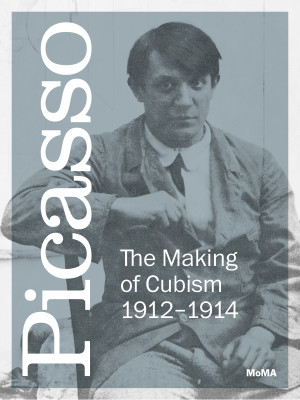Wow! Today I had a look at the first digital-only publication of the Museum of Modern Art,* and I can really see — even after only a short time of experimentation — how much digital technology can do for art books.
 The book, Picasso: The Making of Cubism 1912-1914, comes in iPad or PDF form. Here’s the official description, from the press release:
The book, Picasso: The Making of Cubism 1912-1914, comes in iPad or PDF form. Here’s the official description, from the press release:
Edited by Anne Umland, The Blanchette Hooker Rockefeller Curator of Painting and Sculpture, MoMA, and Blair Hartzell, independent art historian and curator, it embraces the innovative features and infinite real estate of the digital format in order to present new scholarship on a breakthrough moment in the history of Cubism and twentieth-century art. [This] …cross-disciplinary project…presents in-depth studies of 15 objects made by Picasso between 1912 and 1914….
So how is it different? For a start, there’s an easy jump from text to source. Footnote numbers appear in red, click on it, and you go right to the footnote. The trip back to the text is not as simple. it’s manual, but I suspect that will be fixed in future digital books.
UPDATE: MoMA tells me that ” if you click on the red numbers again while you’re in the footnotes, it’ll take you back to the page you were on.” Good — but that was not intuitive.
Better are the thumbnail images in the margins. Click on them and they popup as enlargements.
For each work of art, here’s a description of how the book “works”:
Each of this publication’s fifteen chapters is devoted to a single object created by Picasso between 1912 and 1914. Each chapter has six components: Portfolio of Images, Essay, Conservation Notes, Provenance, Selected Exhibitions, and Selected References, accessible through the persistent navigation bar running along the bottom of each page. The chapters are arranged chronologically by the date of the artwork discussed and can be paged through in sequence, from beginning to end. Alternatively, chapters (along with front and back matter) can be accessed through the Table of Contents. Tapping or clicking a comparative figure brings up a full-page view of that image, with caption. Selected artworks (the artist’s
Guitar constructions) may be “rotated,†or viewed in the round.
All true, as I was beginning to discover with Picasso’s Guitar on a Table, from 1912. It was fun to click on the nav bar, going from “recto” to “verso” to “raking” to “UV” to “Reflected IR” to”Transmitted Ir” to “X-ray.” Then I had to leave my office and go home.
MoMA had warned me that “it has to be read with Adobe Reader or Adobe Pro in order for all the features to work.” I do have Adobe at home — not X, not XI, which is apparently what I need. Many features, like the flipping I described above, didn’t work in Adobe X.
I know that I could just download that, and get back to my exploration. But not tonight, as I write this. Suffice to say, this is a very interesting development in art books, the beginning of a new future in art books.
Picasso: The Making of Cubism 1912-1914Â sells for $24.99. For the iPad app, go to the App Store. For the enhanced PDF version, which can be read on a laptop or desktop, go to MoMA’s online store. It’s a big file — almost 348 MB. It took a few minutes to download. On first glance, it’s worth it.
Photo Credit: Courtesy of MoMAÂ
*I consult to a foundation that supports MoMA
